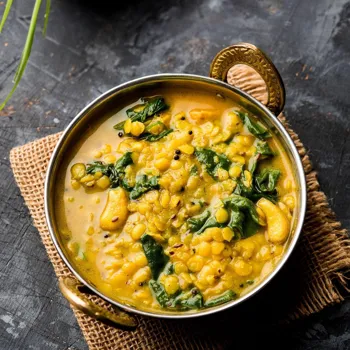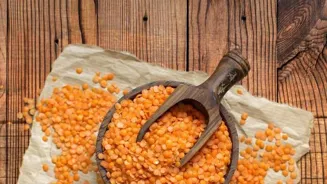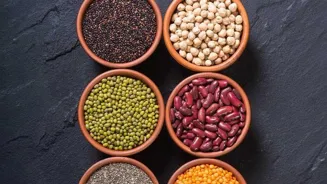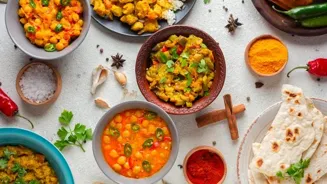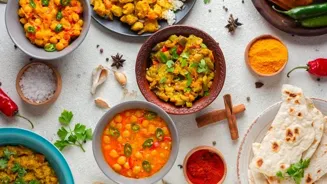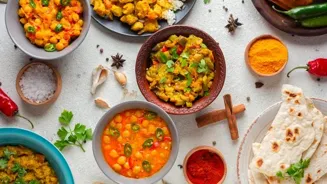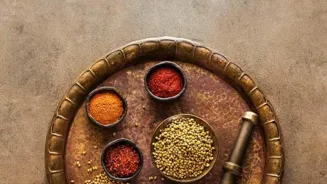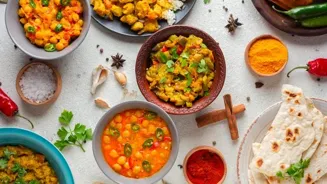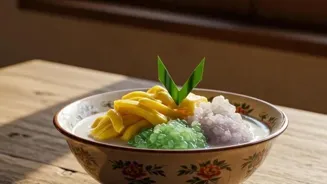Unveiling the Secrets to Perfectly Cooked Lentils - Dive into the world of lentils with expert tips and techniques!
Lentils, or dals as we lovingly call them, are a staple in Indian kitchens. They are not
just nutritious and pocket-friendly, but also incredibly versatile. From hearty dals to crispy dosas, lentils can be transformed into a myriad of dishes.
However, getting that perfectly cooked texture can sometimes be a challenge. Are your lentils too mushy? Or perhaps they're still stubbornly hard after hours of simmering? Fear not! This article unveils the secrets to achieving lentil perfection, every single time.
We'll explore the various types of lentils commonly used in Indian cooking, share essential pre-cooking preparations, and delve into the nuances of cooking techniques that will elevate your dal game. So, grab your favorite lentil variety and get ready to master the art of cooking dals like a pro!
Various lentil types and their unique characteristics for cooking
Before we jump into the cooking methods, let's understand the stars of our show – the different types of lentils. Each lentil variety has its own unique texture, flavour profile, and cooking time. Toor dal, also known as arhar dal, is a yellow split pea with a slightly nutty flavor.
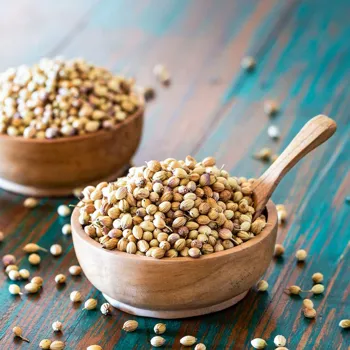
It's a household name in many Indian homes and provides richness to popular dishes like sambar and dal tadka. Moong dal, both the yellow split and the green whole version, is known for its light and easily digestible nature.
It cooks relatively quickly and is often used in kitchari, soups, and even desserts. Masoor dal, or red lentils, are another quick-cooking option that lends a creamy texture to dishes.
Urad dal, both whole black and split white, is a vital ingredient in South Indian cuisine, forming the base for idli, dosa, and vada. Chana dal, or split chickpeas, has a dense texture and a slightly sweet flavour, perfect for dishes like dal makhani.
Understanding these differences helps you choose the right lentil for your recipe and adjust your cooking time accordingly. Next step is to consider the pre-soaking rituals, so each lentil soaks its own time, giving you the best desired output.
Pre-cooking prep crucial for flavorful lentils. Rinse, soak, roast for enhanced taste
Now, pre-cooking preparation is so important. First, even if the packet declares it’s pre-cleaned, always rinse your lentils thoroughly under cool running water. This removes any dust, debris, or impurities that may be present. For most lentils, soaking is highly recommended.
Soaking softens the lentils, reducing their cooking time and making them easier to digest. The ideal soaking time varies depending on the type of lentil.
Moong dal and masoor dal need only about 30 minutes to an hour of soaking, while toor dal, urad dal, and chana dal benefit from at least 2-3 hours, or even overnight soaking. Remember to discard the soaking water before cooking, as it contains phytic acid, which can inhibit nutrient absorption.
After rinsing, you can also dry roast the lentils ever so slightly. Do not burn or over roast. This helps to bring out the nutty flavors of the lentils, giving a deep richness when you cook your dals.
This will ultimately take your simple dal to a whole new lever of flavouring, bringing out the essence that is often missing in the regular, plain old dal. A great technique to impress your family, giving them the best treat on the table.
Various cooking methods for lentils: stovetop, pressure cooker, instant pot
There are several cooking methods to choose from, each offering its own advantages. The traditional stovetop method involves simmering the lentils in a pot with water or broth until they reach the desired consistency.
This method allows for greater control over the cooking process and lets you adjust the seasoning and spices as you go. Using a pressure cooker is a time-saving way to cook lentils, reducing the cooking time significantly. However, it requires careful monitoring to prevent overcooking.
An instant pot, a popular electric pressure cooker, offers even more precise control with its pre-set programs and temperature settings. It's a convenient option for busy individuals who want a quick and hassle-free way to cook lentils.
Regardless of the method chosen, remember to use the right water-to-lentil ratio. As one important tip, always add salt towards the end of the cooking process. Adding salt at the beginning can toughen the lentils and prolong their cooking time.
A dal is best enjoyed when garnished carefully and beautifully. A simple garnish consisting of coriander leaves and a dollop of ghee is divine.
Achieve perfect lentils with key tips for consistent results
Achieving consistent results requires a keen eye and a few simple tweaks. If you find that your lentils are cooking unevenly, stir them occasionally to ensure even heat distribution. A common problem is lentils sticking to the bottom of the pot.
To prevent this, use a heavy-bottomed pot and stir frequently. If the lentils start to dry out during cooking, add more water or broth as needed. Always adjust the amount of liquid, so that your lentils don't get stuck at the bottom. To test for doneness, press a lentil between your fingers.
It should be easily mashable but still hold its shape. One could also simply taste a spoonful to ensure the correct consistency as there are different preferences for different people. Some may like watery dals and some may prefer thick gloopy dals.
The cooking consistency should also match the type of dal and the dish you plan on making. This step is absolutely essential to get you that perfect dish that is a flavor bomb in your house. Adding the right spices enhances it too.
Elevate lentil dishes with tempering, spices, lemon, herbs, veggies, and creativity
Beyond the basic techniques, there are several tips and tricks that can elevate your lentil dishes to the next level. Tempering, or tadka as it's called in Hindi, involves heating oil or ghee and frying spices like cumin seeds, mustard seeds, garlic, and chilies to infuse it with flavour.
This flavourful oil is then poured over the cooked lentils, adding a burst of aroma and taste. A squeeze of lemon juice or amchur powder (dried mango powder) can add a touch of brightness and acidity to balance the richness of the lentils.
Experiment with different spice combinations to create your signature dal recipe. A pinch of asafoetida (hing) can aid digestion and add a unique flavour to your lentils. Fresh herbs like coriander, mint, or curry leaves can add a refreshing touch.
You can also add vegetables like spinach, tomatoes, or onions to your lentils for added nutrients and flavour. Remember, cooking is an art. Don't be afraid to experiment and have fun! A dash of ginger with garlic is a beautiful addition to your recipe.
Ensure the ratio is maintained adequately to enhance the flavors and not overpower the dish.
Master lentil cooking with tips and experiments
With these tips and techniques, you're now equipped to cook lentils to perfection every time. So, go ahead and experiment with different lentil varieties, spices, and cooking methods to create your own unique and delicious dal recipes. Happy cooking!
